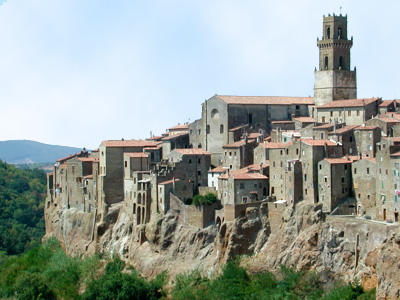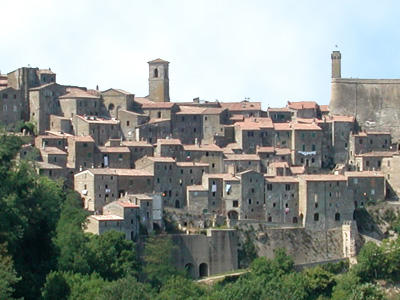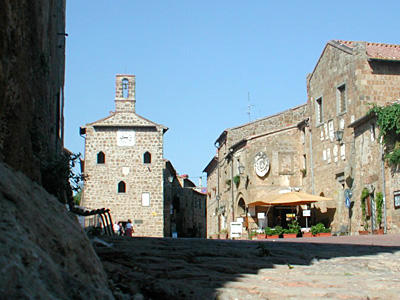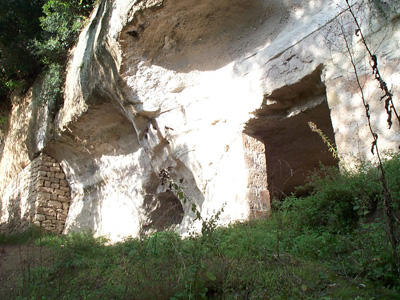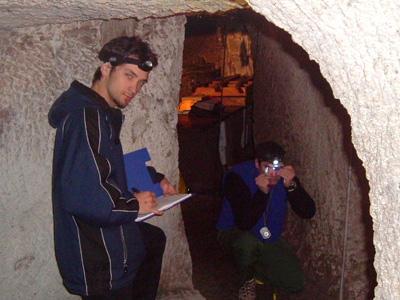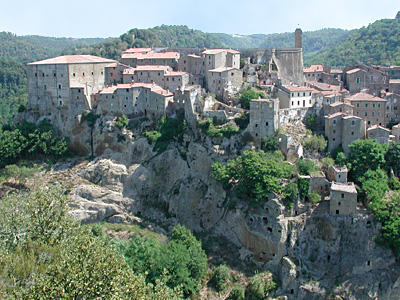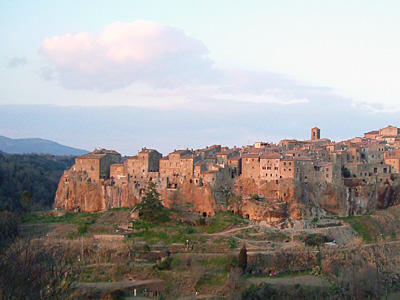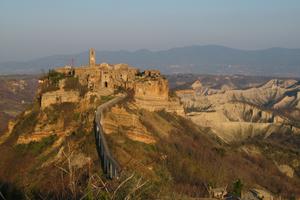2004 World Monuments Watch
The towns of Pitigliano, Sorano, Manciano, and Civita di Bagnoregio were built into the soft tufa, or “tuff,” bedrock that formed into steep hills from volcanic ash. In the 6th century B.C. Etruscan settlements were arrayed along these hilltops, providing defense positions above highly arable land. Underground tunnels and rooms still extend from the summit of many towns to the valley floor. The Etruscans also created the nearby Vie Cave, a system of deep trenches adorned with carved inscriptions, which linked religious sites and a necropolis. The area has since undergone several impressive periods of building; most of its surviving architecture dates from the Middle Ages and the Renaissance. Unfortunately, the soft tuff stone has deteriorated over the centuries and many of the buildings have been destabilized. Natural erosion from wind, rain, and climate cycles has also caused landslides. By the time the towns were included on the 2004 World Monuments Watch, a full 10% of Sorano had disappeared. Soon after the Watch was announced, a landslide blocked off a major branch of the Vie Cave system.
Practical learning opportunities in Pitigliano and Civita di Bagnoregio
Local and regional Italian governments have commissioned geological studies in the areas surrounding the tuff towns and the Vie Cave, and numerous scientists have considered a variety of solutions to their problems in recent decades. In collaboration with the local government and the University of Florence’s Earth Sciences Department, World Monuments Fund helped organize a geotechnical study at Pitigliano. Between May 2006 and the fall of 2007 the town’s underground passages were mapped, its north and south cliffs were documented using laser scanning technology, the stability of its slopes was analyzed, and an innovative monitoring system was installed in order to track the collapse of the tuff.
In May 2008 we organized a symposium in Civita di Bagnoregio on the Conservation and Sustainable Development of the Tuff Towns in collaboration with the Northwest Institute for Architecture and Urban Studies in Italy (NIAUSI). Participants from around the world, including geotechnical engineers, architects, local officials, and specialists in regional planning and sustainable tourism, discussed the issues facing the tuff towns and created plans that would help protect them. New working relationships forged between the attendees led to the development of several initiatives, including two geological measurement and analysis projects.
The medieval hill towns of Pitigliano, Sorano, Manciano, and Civita di Bagnoregio present a cultural landscape that has defined the surrounding area. Our efforts to preserve them have highlighted historic systems and infrastructure connecting the landscape and towns, and have provided a clearer understanding of the way the region was settled.

